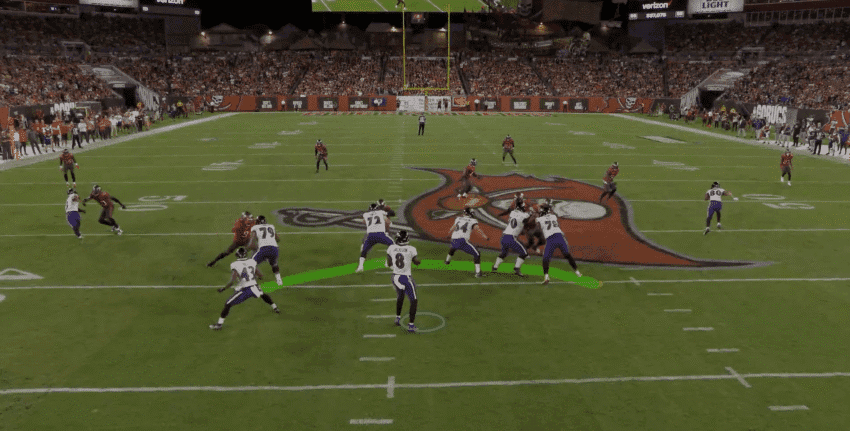
amazon s thursday night football broadcasts add Amazon is enhancing its Thursday Night Football broadcasts by integrating advanced AI features aimed at providing deeper insights into NFL games.
amazon s thursday night football broadcasts add
Introduction of AI Features
As part of its ongoing efforts to innovate sports broadcasting, Amazon’s Prime Video is set to introduce a suite of AI-driven features for its Thursday Night Football coverage. These enhancements are designed to enrich the viewing experience by delivering real-time analytics and insights that were previously unavailable to the average fan. The introduction of these tools comes as Amazon prepares to air its first game of the 2025 NFL season, marking a significant evolution in how football is presented to audiences.
Pocket Health: Assessing Quarterback Risk
One of the standout features being introduced is called “Pocket Health.” This AI-powered tool leverages machine learning algorithms to analyze “tens of thousands of data points” related to the offensive line during a play. By doing so, it assesses the level of risk faced by the quarterback in real-time. The system generates on-screen visuals that indicate the threat level to the quarterback, providing viewers with a clearer understanding of the dynamics at play during critical moments of the game.
How Pocket Health Works
Pocket Health operates by examining various factors, including player positioning, movement patterns, and historical data from previous games. By synthesizing this information, the AI can predict potential threats to the quarterback, such as incoming blitzes or defensive line penetration. This feature not only enhances the viewing experience but also educates fans about the complexities of offensive and defensive strategies in football.
Implications for Fans and Players
The implications of such technology are significant. For fans, Pocket Health provides a more engaging experience, allowing them to appreciate the nuances of the game. For players and coaches, the insights generated can inform training and strategy, potentially leading to improved performance on the field. As the NFL continues to embrace technology, features like Pocket Health could become standard in sports broadcasting, setting a precedent for other leagues to follow.
End of Game Tools: Predicting Outcomes
In addition to Pocket Health, Amazon is also rolling out a new set of AI-powered End of Game tools. These features aim to analyze game situations and provide predictions about potential outcomes, particularly for teams that are trailing. One tool gauges the possible possession scenarios for losing teams, while another estimates the amount of time a team would need to mount a successful comeback or secure a victory.
Possession Scenarios
The possession scenarios tool evaluates various factors, including the score, time remaining, and team performance metrics. By analyzing these elements, the AI can offer insights into the likelihood of different outcomes based on current game conditions. This feature could be particularly valuable for fans who want to understand the strategic decisions being made by coaches in high-pressure situations.
Time for a Comeback
The second tool focuses on predicting how much time a team would need to orchestrate a comeback. This analysis takes into account the historical performance of teams in similar situations, as well as real-time data from the current game. By providing this information, Amazon aims to keep viewers engaged even in games that may seem one-sided, highlighting the unpredictable nature of football.
Existing AI Tools: Enhancing Viewer Engagement
These new features build upon the existing AI tools that Prime Video has already integrated into its Thursday Night Football broadcasts. One such tool is called “Defensive Alerts,” which utilizes machine learning to identify players who may blitz during a play. This feature alerts viewers to potential defensive strategies, enhancing their understanding of the game and keeping them engaged throughout the broadcast.
Defensive Alerts: A Closer Look
Defensive Alerts works by analyzing player formations and movements in real-time. By identifying patterns that typically precede a blitz, the AI can provide timely alerts to viewers. This not only enhances the viewing experience but also serves as an educational tool, helping fans learn more about defensive strategies and the intricacies of the game.
Impact on Broadcasts
The integration of AI tools like Defensive Alerts and Pocket Health represents a significant shift in how sports are broadcasted. Traditional broadcasts often rely on commentators to provide insights, but with AI, viewers can receive real-time data that enhances their understanding of the game. This shift could lead to a more informed fan base, as viewers become accustomed to interpreting data and analytics as part of their viewing experience.
Stakeholder Reactions
The introduction of these AI features has garnered mixed reactions from various stakeholders in the sports community. Some analysts and fans have expressed enthusiasm about the potential for enhanced engagement and understanding of the game. They argue that these tools could democratize access to complex football strategies, making the sport more accessible to casual viewers.
Positive Feedback from Fans
Many fans have welcomed the advancements, noting that the integration of AI can make watching football more interactive and informative. The ability to see real-time analytics and predictions can transform the viewing experience, allowing fans to feel more connected to the game. As a result, they may be more likely to engage with the sport on a deeper level, potentially increasing viewership and loyalty to the NFL.
Concerns from Traditionalists
On the other hand, some traditionalists have raised concerns about the reliance on technology in sports broadcasting. They argue that the essence of the game lies in its unpredictability and human elements, which could be overshadowed by an overemphasis on data and analytics. Critics worry that the introduction of AI features may lead to a more clinical viewing experience, detracting from the emotional highs and lows that make sports compelling.
The Future of AI in Sports Broadcasting
As Amazon continues to innovate with its Thursday Night Football broadcasts, the future of AI in sports broadcasting looks promising. The integration of advanced analytics and real-time data could set a new standard for how sports are presented to audiences. Other networks may feel pressure to adopt similar technologies to remain competitive, potentially leading to a broader shift in the industry.
Potential for Broader Applications
The implications of these advancements extend beyond football. Other sports leagues may look to Amazon’s model as a blueprint for integrating AI into their broadcasts. This could lead to a more data-driven approach across various sports, enhancing the overall viewing experience and providing fans with unprecedented insights into their favorite games.
Challenges Ahead
However, the journey toward fully integrating AI into sports broadcasting is not without challenges. Issues such as data privacy, the accuracy of predictions, and the potential for over-reliance on technology will need to be addressed. As AI continues to evolve, stakeholders will need to find a balance between leveraging technology and preserving the human elements that make sports so captivating.
Conclusion
Amazon’s introduction of AI features for its Thursday Night Football broadcasts marks a significant step forward in the evolution of sports broadcasting. With tools like Pocket Health and End of Game analytics, viewers can expect a more engaging and informative experience. As the NFL embraces these technological advancements, the future of sports viewing may be transformed, offering fans a deeper understanding of the game while also raising important questions about the role of technology in sports.
Source: Original report
Was this helpful?
Last Modified: September 12, 2025 at 1:38 am
2 views















